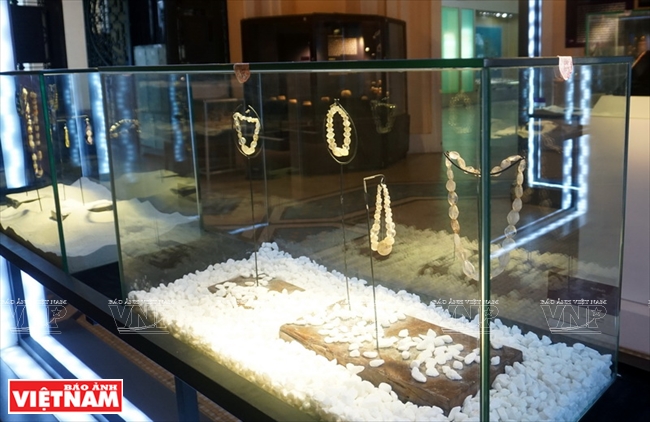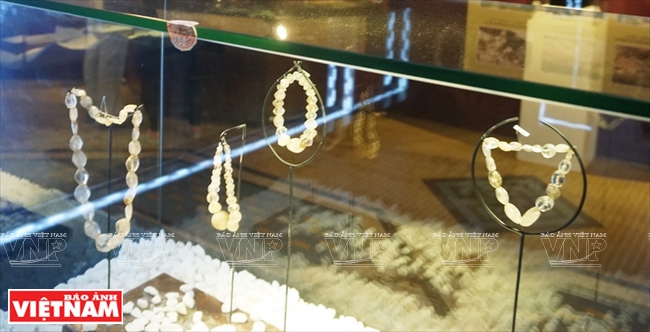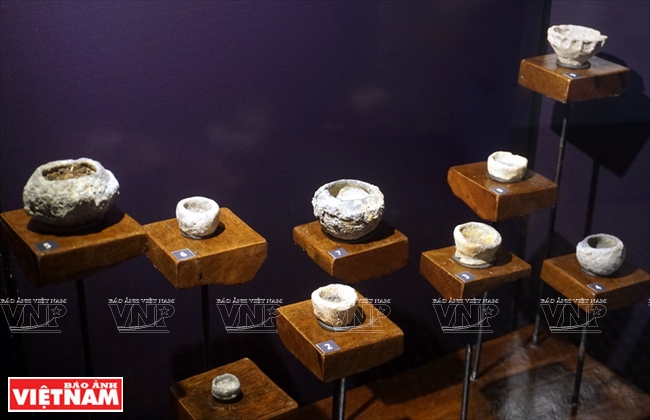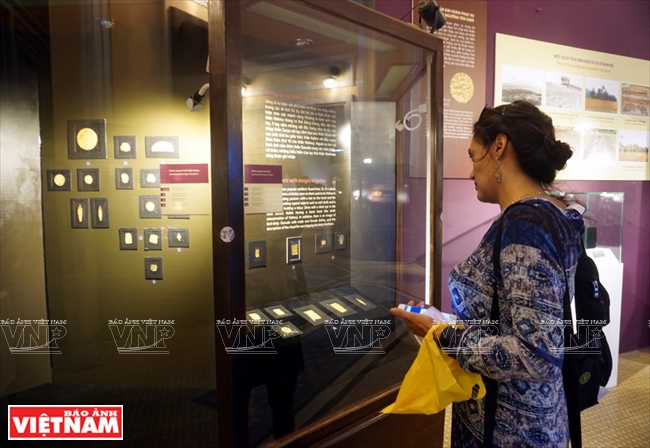
The exhibition “Treasures of the ancient kingdom – Art of Oc Eo goldsmiths and jewelers” attracts a lot of visitors.

Oc Eo treasures and jewelry are proof of the golden age of the Phu Nam kingdom dating back nearly 2,000 years.

Beautiful jewelry.

A corner displaying ceramic pots.

Exploring the ancient Oc Eo culture. |